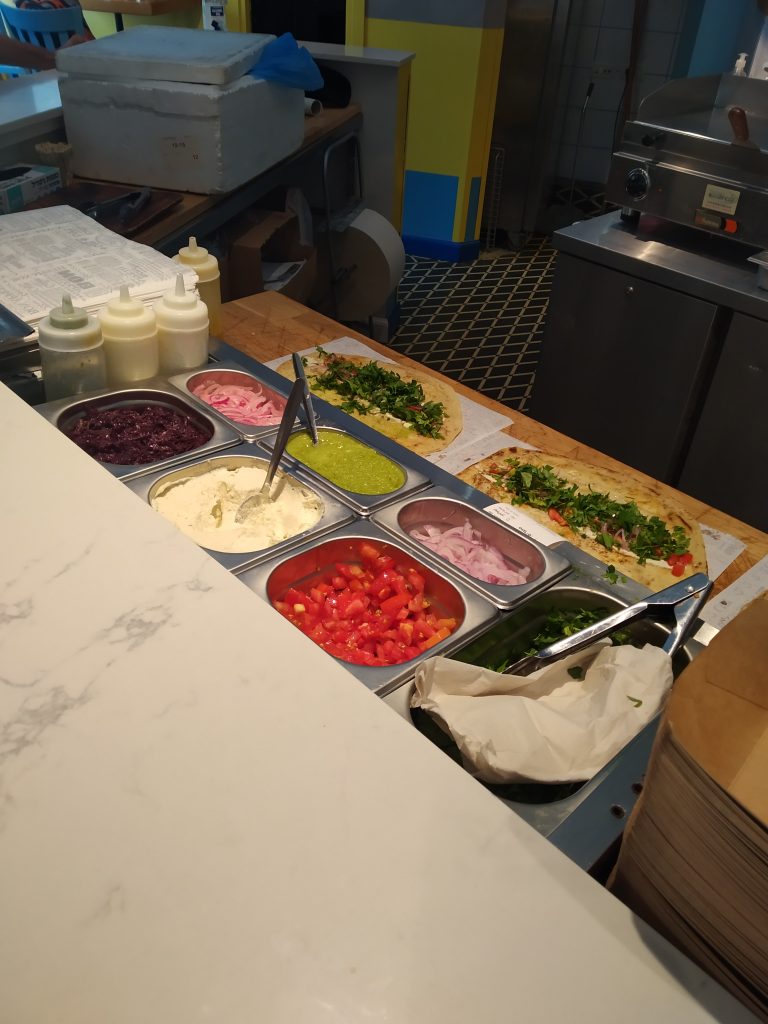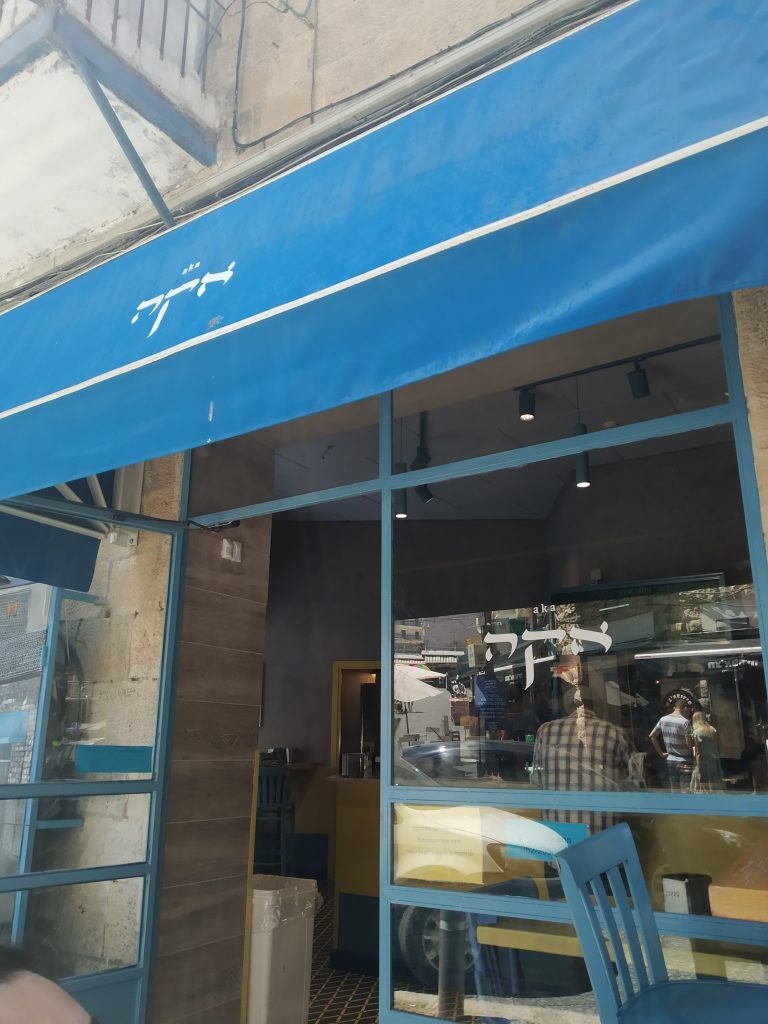I spent approximately the last half hour luxuriating in the first (kosher) döner kebab establishment in Jerusalem. As the meat is currently slowly transitioning through my now-gallbladder-less system (yes, this isn’t on the post-op diet!) I thought this would be the ideal time to convey my excitement at this development.
Location
So what and where is it?
Aka (אקא) has just opened up next to Shuk Mahane Yehuda (better known to locals simply as ‘the shuk’). Locals would refer to is as “it’s opposite רחמו at the bottom of that little hill that leads to Agripas St” (and next to Segev). Alternatively, if you’re a hungry tourist reading this, then please navigate to this landmark.
Judging by the fact that people are already queuing out the door I predict that this spot will do very well.

What’s The Difference Between Doner Kebab and Shawarma?
Today’s doner kebab marked the culmination of a number of unsuccessful years spent trying to track down doner kebab (rather than shawarma) in Jerusalem and Israel.
I did manage to find a non-kosher eaterie off Salah Ah-Din street in East Jerusalem (Istanbul Samer Turkish restaurant, 5 E-Zahra street). But I was pleasantly surprised to find that the newly opened Aka not only does the first doner kebab in the city but it actually does it superlatively well.
You may be wondering what is the difference between doner kebab and shawarma (and, of course, gyro). This hot-button topic is debated on Quora and other parts of the internet, but — as a longtime kebab fan — let me outline some differences:
- Doner kebab (also spelt döner) originates in Turkey while shawarma originates, as the name suggests, in the Middle East. The vertical rotisserie — a ubiquitous sight in kebab shops — was invented during the Ottoman empire. Doner does not typically entail the addition of Middle Eastern ingredients such as tahini and humus. And I was delighted to see that the restaurant resisted the local obsession. They did add amba but only in small quantities. And the addition of amba can always be forgiven.
- The spicing is different.
- The meat is different. Doner kebab meat is often ground before being mixed with the spices and cooked. This gives it a very unique texture – almost like shreds of meat. Shawarma is usually simply stacked in layers — with tail fat on top.
Aka’s take on doner was excellent. The bread used was homemade lavash. After adding the toppings (kashrut-friendly parve ‘yohurt’, parsley, tomatoes, and heapings of chilli sauce per my request), the doners were rolled into thin kebabs. In the choice of bread and the resultant thin kebabs the doners resembled very closely those served in Turkey. However those looking for a carbon copy of the doner copies imported and popularized in Northern Europe will be a little disappointed.
Fun doner kebab trivia: Kadir Nurman is widely credited as the ‘inventor’of the doner kebab — although it is probably more accurate to state that he popularized the dish which was appearing on menus in Istanbul from the forties. The European adaptation of the doner kebab — typically served in na’an bread, which, besides the meat, would post kashrut (kosher) issues — is now a post-drinking staple throughout Britain and Ireland. Born in Turkey, Nurman popularized the dish while living in West Berlin.
Prices
- My doner sandwich costed 39 NIS.
- Potato fries were 18 NIS.
- My reviewing companion enjoyed a 330ml (“shleesh” / third) serving of Shapira craft beer for 20 NIS. Which isn’t bad considering Israeli beer prices (fun fact: craft beer and regular beer are often priced the same — stick with the good stuff).
Review
Food: ⭐⭐⭐⭐
Price: ₪
H/T: ‘Fun’ Joel Haber, one of English-speaking Israel’s great food connoisseurs and guides







